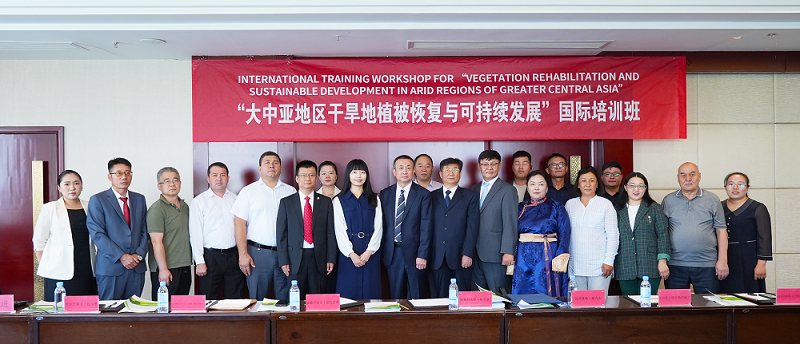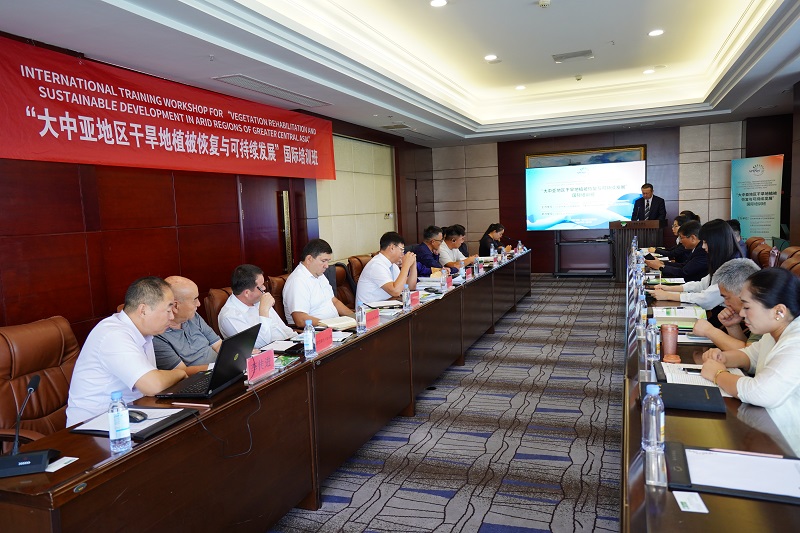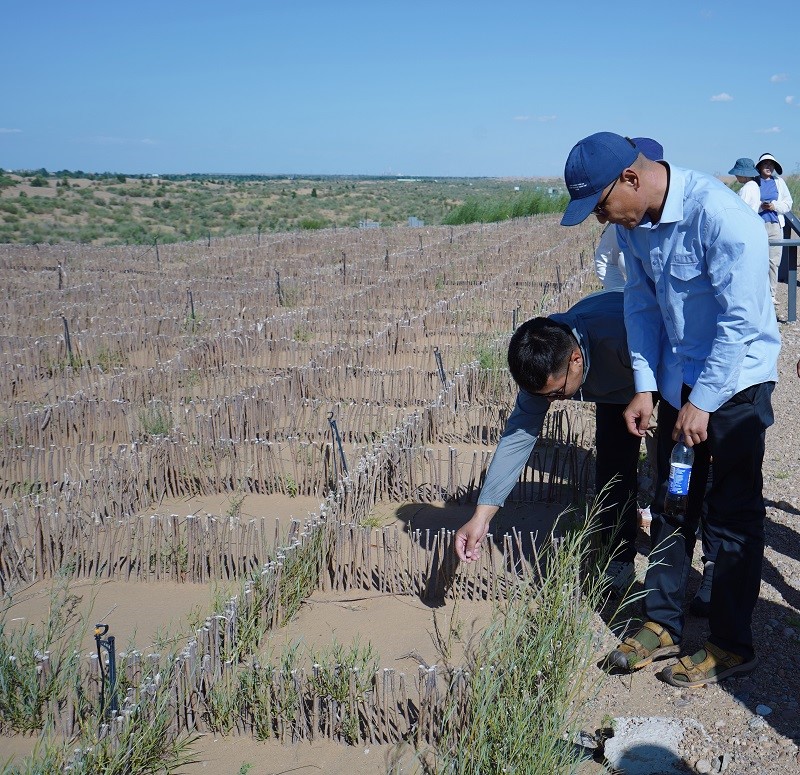Asia-Pacific Network for Sustainable Forest Management and Rehabilitation (APFNet) concluded its ninth international training workshop in Ordos, equipping forestry specialists from across Greater Central Asia with cutting-edge techniques for combating desertification. Hosted in collaboration with the Inner Mongolia Forestry and Grassland Bureau, Ordos City Forestry and Grassland Bureau and Inner Mongolia Academy of Forestry Sciences from July 12-18, the intensive workshop blended academic rigor with field-based learning across Ordos' ecological restoration sites under the framework of the Greater Central Asia Forestry Cooperation Mechanism (GCA-FCM).
The week-long program engaged nine forestry professionals - including six Mongolian and three Uzbek specialists - in a balanced curriculum featuring two days of classroom instruction and three days of hands-on field training across Inner Mongolia's restoration sites.

Group Photo of Participants at the Ninth International Training Workshop (2025)
Knowledge Sharing and Academic Insights
The indoor lectures covered carefully curated topics delivered by seasoned experts and researchers who have dedicated their careers to combating desertification in China. Key presentations included:
●The role of new productive forces in the Green Great Wall Project;
●Carbon credit measurement and monitoring techniques for forests and grasslands;
●Models of desertification prevention and control in Inner Mongolia; and
●The current development of forestry, grassland, and desertification control industries in the region.
These sessions provided participants with a theoretical foundation and practical tools to address land degradation and promote sustainable land management.

Indoor training session covering vegetation rehabilitation techniques for dryland sustainable development
Field Visits: Experience in Action
Following the classroom component, participants visited several significant sites:
●The Northern-Central New Energy Base in the Shagehuang area of the Kubuqi Desert;
●Engebei Desert Science Museum;
●The Shelterbelt Construction Project at the northern edge of the Kubuqi Desert;
●The Yinkensha afforestation station;
●Demonstration sites on the industrial development of almond, seabuckthorn, and other desert-based fruit products; and
●The Ten-Thousand-Mu Pinus sylvestris forest demonstration project in Ejin Horo Banner.
Site visits to demonstration projects revealed China's 'ecological civilization' paradigm at work, where patented desertification control technologies operate in tandem with poverty alleviation programs, creating replicable models for arid regions worldwide.

Field Study on Straw Checkerboard Sand Barrier Implementation
Regional Impact and Appreciation
Participants noted that although desertification challenges are common across the Greater Central Asia region, the strategies and innovations applied in China—especially Inner Mongolia—offered valuable lessons adaptable to their home economies.
The week-long training concluded with positive feedback from all participants, who expressed their appreciation for the opportunity to deepen their understanding and enhance regional cooperation. They acknowledged the significance of the workshop in shaping their future work and contributing to the development of sustainable forestry and land management systems in their respective economies.